Yes, jade can go in water for a short period of time. Jade can be damaged by prolonged exposure to water, especially if the water contains chemicals or salt.
Have you ever held a jade stone, felt its cool, smooth surface, and wondered about the story it carries within? Jade, a gemstone with a rich history and imbued with a plethora of healing properties, is more than meets the eye. But did you know that the way you interact with jade, especially its exposure to water, can significantly impact its longevity and potency? Buckle up as we delve into the world of jade and address the question, “can jade go in water?” and its intriguing relationship with water.
Key Takeaways
- Jade is safe to be briefly submerged in water, but should be handled with care and long-term exposure avoided.
- Clean jade using mild soap & warm water. Recharge it by placing under moonlight or burying in brown rice.
- Protect your jade from damage by keeping it close to the heart chakra, avoiding abrasive materials & strong chemicals, and maintaining room temperature.
Is Jade Water Safe?
Yes, jade is water safe but should not be submerged for long periods, especially in chemically treated or salty water.
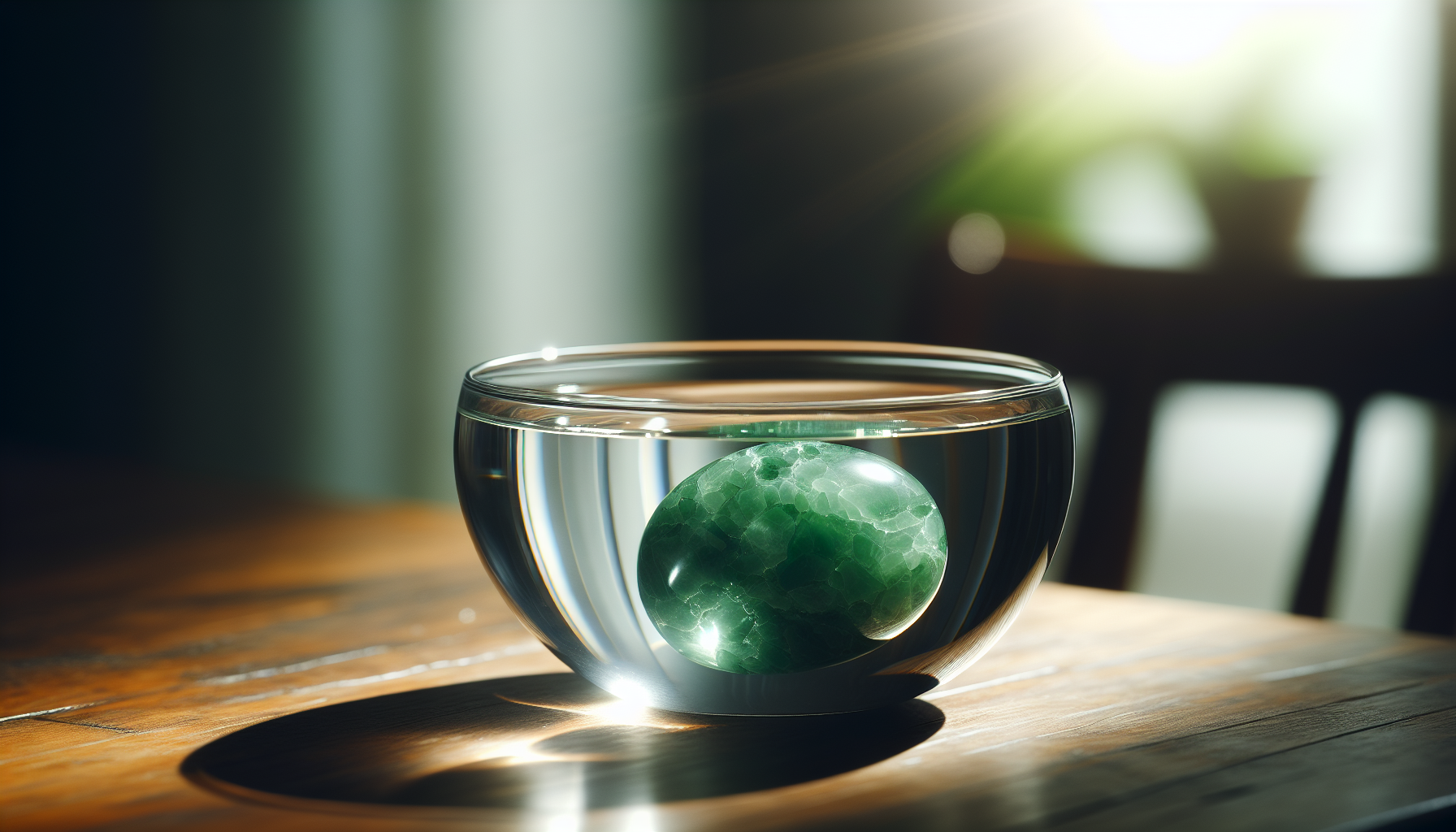
Jade, a mineral composed of either nephrite or jadeite, is notably different from most quartz stones. Its vibrant hues vary from green to black, lavender, and occasionally blue, each piece serving as an individual testament to nature’s artistry. A question that often arises is whether jade is safe to be submerged in water. The short answer is yes, jade can safely take a dip in fresh water for brief periods. This characteristic sets it apart from some of its gemstone brethren like the delicate tangerine quartz.
However, like all precious things, jade calls for a touch of caution. As you would safeguard your rose quartz jewelry or any other precious gemstones, it is paramount to prevent potential damage when jade comes in contact with water. The process of submerging jade in fresh water should be handled with the same delicate care that a painter would apply while creating a masterpiece, ensuring the jade’s longevity and preserving its natural splendor. Rest assured, jade is not alone in its ability to dance with the water; gemstone companions like citrine and rose quartz also share this ability.
Short-term vs long-term immersion
Unraveling the mystery of jade and water further, we’ll examine the differences between short-term and long-term immersion. Imagine a summer’s day dip in the pool versus a long soak in the bathtub. Much like how our skin responds differently to each, jade too has contrasting reactions to short and long-term submergence in water. A quick dip is perfectly safe for jade, owing to its durability, which finds a place between 6.5 to 7 on the Mohs hardness scale. Just like a hard stone standing resilient against the test of time, jade too can withstand brief periods submerged in water.
However, for long-term exposure, caution should be exercised. Prolonged exposure to water can be detrimental to jade, as it can lead to potential adverse effects similar to how overwatering a plant can lead to root rot. So, while cleaning your jade, consider treating it like an exotic plant that requires a quick sprinkle rather than a long soak. A gentle cleaning method would involve submerging the jade in warm, soapy water and tenderly brushing it with a soft-bristled toothbrush. However, remember, the softer the material, the more susceptible it is to damage, so it is best to avoid prolonged immersion even while cleaning it. On the other hand, exposing jade to salt water for extended periods can result in the development of mineral deposits or white spots, akin to those seen in bathrooms. Hence, avoiding long-term exposure to salt water is also advisable.
Fresh water vs salt water
How does jade fare when pitted against fresh water and salt water? Picture an iron sword, resilient and strong in the face of fresh water, but steadily corroding upon exposure to salt water. Similarly, jade’s chemical stability and resistance to most chemical agents, including rock salt, make it more resilient to fresh water than salt water. It withstands exposure to normal water like a steadfast soldier, unfazed by acids, alkalis, or other chemical agents.
The implications of using fresh versus salt water on jade are quite significant. Salt water, with its higher salt content, can lead to corrosion and discoloration of the stone over time due to the presence of iron oxide and other minerals. On the other hand, fresh water with its lower salt content is like a gentle stream, less likely to cause any harm to this precious gem. So, next time you plan to give your jade a quick rinse, treat it to some fresh water goodness, and avoid long-term immersion in salt water.
Can Jade Go In Salt?
Yes, jade can go in salt, but it’s important to thoroughly remove all salt residue afterwards.
Salt is not just for seasoning your food; it can also be a great ally when it comes to cleansing your jade. This method involves placing the jade in a bowl containing sea salt and allowing it to sit overnight to absorb any negative energy. However, caution is advised. Salt, including that present in human sweat, can impact the texture and quality of jade. Hence, it’s important to guarantee all salt residue is completely removed following this process.
Can Jade Go In the Sun?
Yes, jade can go in the sun, but prolonged exposure may result in damage.
The sun, our primary source of light and warmth, can be a friend or foe to jade. Untreated jade can be exposed to sunlight for a maximum of 24 hours without significant fading. However, prolonged exposure may result in dehydration, wrinkled leaves, color fading, and other forms of damage.
Similar effects can be observed with indirect sunlight. So, while a little sunbath can be beneficial, it’s best not to leave your jade under the harsh rays of direct sunlight for extended periods.
How to Cleanse Jade With Water Properly?
To cleanse Jade properly, follow the below mentioned steps.
- Fill a bowl or sink with warm water.
- Add a small amount of mild soap to the water.
- Gently place the jade into this soapy water.
- Use a soft cloth or sponge to gently scrub the jade, paying close attention to any dirt or grime.
- Rinse thoroughly with clean water.
- Pat dry and let it air dry completely before storing or wearing it.
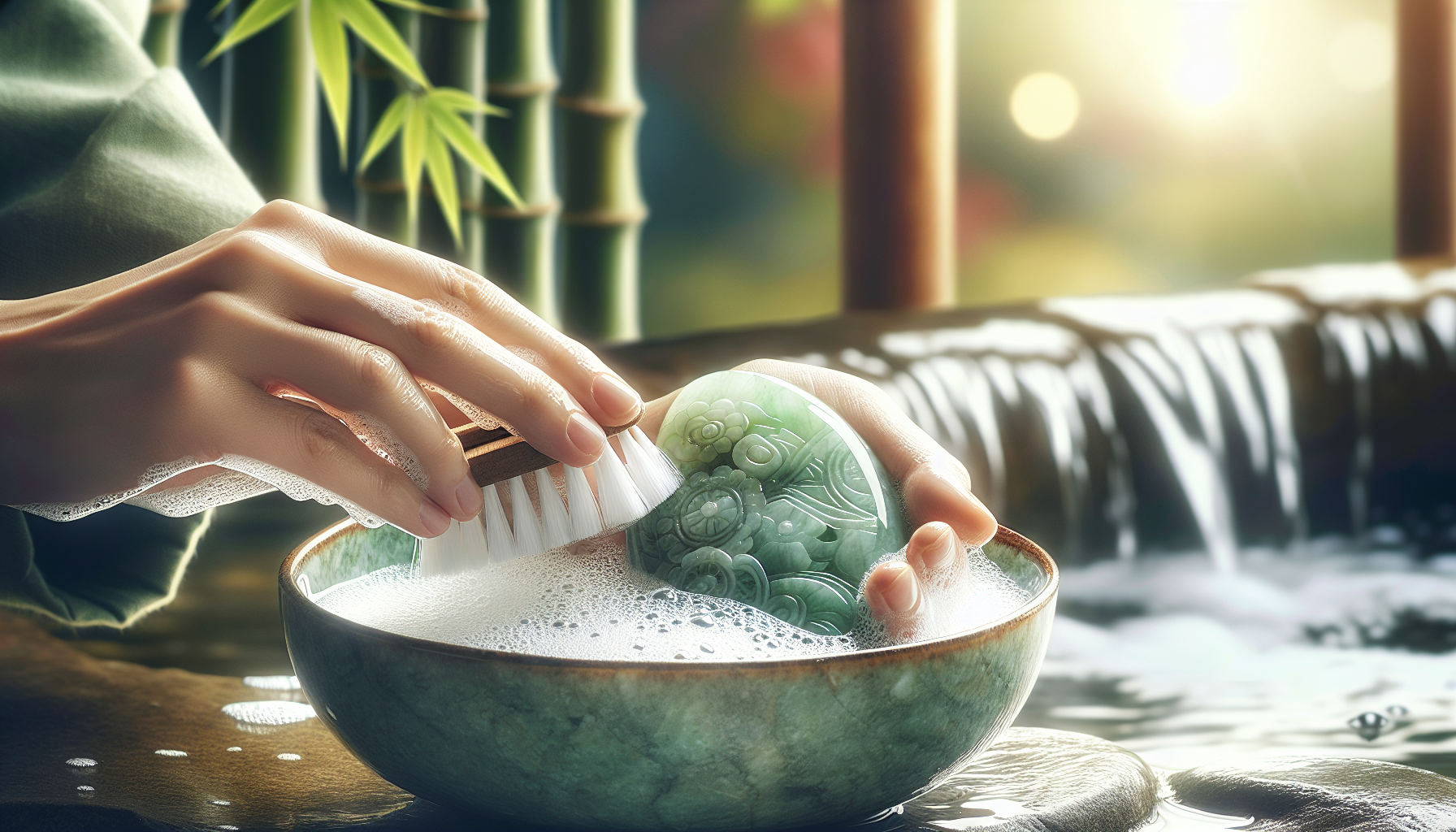
Like the moon that needs to wane completely to be reborn anew, jade too requires regular cleansing to maintain its positive vibration. Picture it as a recharge for your jade, a way to keep it brimming with energy, just like most quartz stones and other gemstones. But how does one go about cleansing jade? The answer lies in a simple but effective method: using mild, soapy water. Envision a soothing stream washing over a stone in a calm forest, gently removing any dirt or debris, leaving it shining in the sunlight. That’s how tenderly you should approach the cleansing process.
When to Avoid Water: Identifying Risky Situations
While water is typically jade’s ally, certain circumstances can make it its adversary. For example, crystals containing copper, lead, sulfur, asbestos, or other toxic chemicals should not be submerged in water.
Even jade, when exposed for an extended duration, may have its hardness and overall strength compromised, potentially resulting in damage.
How to Cleanse Jade Without Water?
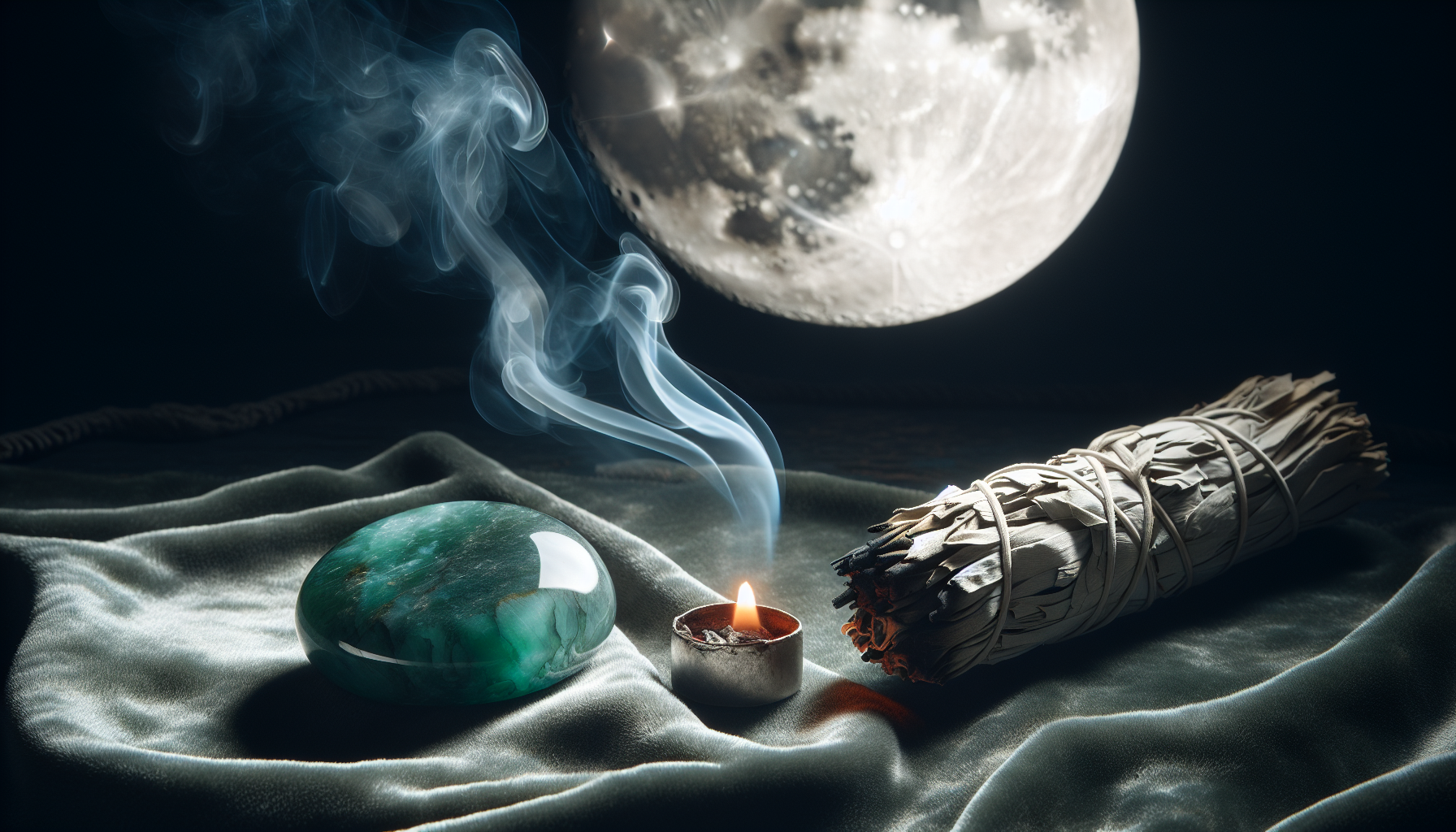
While water is a popular means for cleansing jade, it’s not the sole method. Jade can be cleansed through a variety of methods including:
- Moonlight
- Sound
- Soil
- Fire
- Sage
- Use of one’s own breath
Each method has its own unique benefits and can provide a refreshing change for your jade, especially if you’re looking for more spiritual methods.
Yet, while commencing the cleansing process, it is important to be mindful of the types of cleaners and techniques employed. Most common jewelry cleaners and techniques may cause damage due to the wax applied to the stone after polishing. Therefore, extra precautions must be taken to ensure your jade continues to sparkle brightly without impediment.
How to Dry and Store Jade Properly?
Once your jade is thoroughly clean, it’s time to properly dry and store it. Below listed are the steps to follow.
- After cleaning, jade should be allowed to be covered in oil for 5-10 minutes.
- Use a dry paper towel to remove the oil.
- Once dry, jade should be stored in a jewelry box with separate compartments, or on its own.
- It is best to keep jade in velvet pouches or satin-lined cases.
Proper storage is necessary to maintain jade’s quality and safeguard it from possible harm.
How to Recharge Jade?
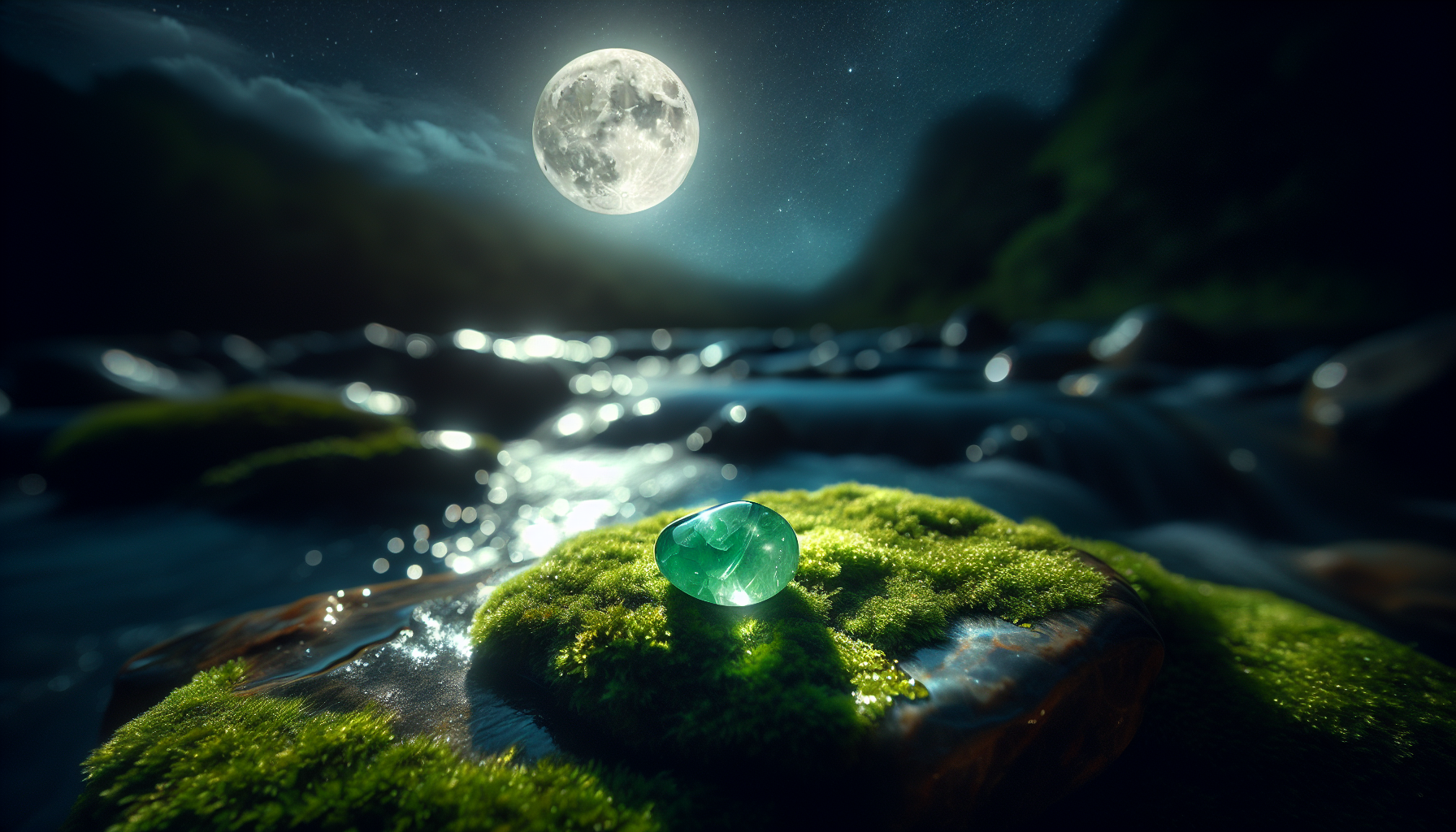
Once your jade is sparkling clean, it’s time to recharge its energy. Picture a phone after a long day of use, battery drained and in need of a good recharge. Much like that, jade too can benefit from an energy boost after being used for a while. And the beauty of it is, you have several options to do so.
The moonlight method involves placing the jade stone outside or near an open window under direct moonlight for a few hours or overnight. Just like a flower blooming under the moonlight, the jade stone too will be cleansed and recharged, ready to serve you with renewed energy.
If you prefer a more earthy approach, brown rice could be your go-to. Bury the jade in a bowl of dry brown rice for 24 hours to draw out any negative energies.
And finally, for those who prefer a touch of mysticism, recharging jade with sage is a great option. You can bury the crystals in loose-leaf sage or use sage incense for spiritual cleansing.
How to Identify Genuine Jade?
To identify genuine Jade, use the following methods.
- Measure its hardness on the Mohs scale, genuine jade ranks between 6.5 to 7.
- Use a specific gravity test to assess the density of the stone.
- Observe the color, genuine jade typically has a rich, vibrant hue.
- Conduct a scratch test, genuine jade should not be easily scratched.
- Look for imperfections, as genuine jade often has small imperfections within the stone.
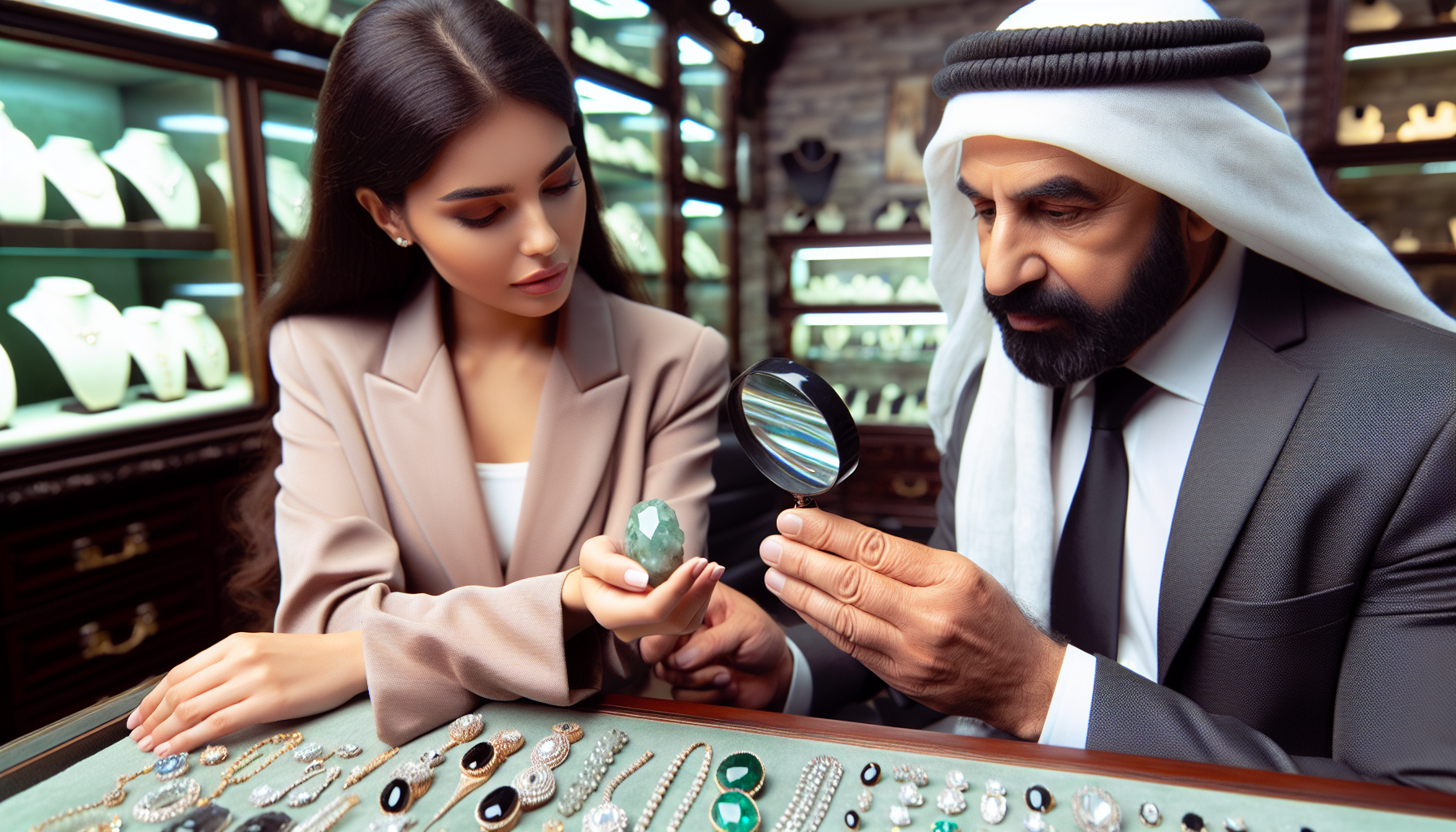
Imagine walking into a jewel shop, the air filled with an intoxicating mix of incense and metal, shelves lined with myriad gemstones, each with their own story to tell. Amidst this dazzling array, your eyes settle on jade, its rich hues calling out to you. But how do you ensure that the stone you’re drawn to is genuine jade? The world of gemstones can be a labyrinth of similarities, making it crucial to understand the identifying features of each gemstone.
Nephrite jade and jadeite are both considered true jade, with jadeite being rarer and more valuable, hence more sought after. The Mohs scale of hardness can be your compass in this journey of identification. Genuine jade ranks between 6.5 to 7 on this scale, indicating its relative hardness and durability. Imagine a fortress, standing tall and unyielding against the elements. That’s how jade stands out amidst other softer stones with a lower hardness rating.
Another useful tool is the specific gravity test, which involves assessing the density of the stone. This test can offer useful knowledge about the authenticity of the jade you’re evaluating.
Jade’s Healing Properties and Uses
Beyond its physical allure, jade carries within it a world of healing properties, akin to a hidden treasure waiting to be discovered. Since ancient times, jade has been associated with healing and rejuvenation, serving as a symbol of renewal and vitality. Considered a stone of luck and abundance, jade is also believed to aid in the activation of the heart chakra. Picture a lush green field under a clear sky, the air filled with a sense of tranquility and abundance. That’s the kind of energy jade brings into your life.
There are multiple ways to utilize the healing energies of jade. Here are some examples:
- Placing it on an altar with an intention in mind, such as releasing fears or manifesting abundance, can amplify its properties. Just like a seed planted with love grows into a beautiful plant, your intentions can help nurture the energy of the jade.
- Wearing jade can also bring luck, abundance, and support the heart chakra.
- Jade can even be incorporated into candle magic to bring abundance and luck into your life.
With jade, the possibilities are as varied and abundant as the stone itself.
Pairing Jade with Other Crystals
The charm of crystals is in their capacity to complement one another, creating a harmony of energies that can amplify their individual attributes. Similar to the harmony in an orchestra where each instrument contributes to a beautiful tune, coupling jade with other crystals can enhance its healing potential and help attain the intended outcomes. Combining jade with a quartz crystal, for instance, can reinforce the energy of other stones, while pairing jade with grounding stones can assist in bringing equilibrium and encouraging overall well-being. The use of quartz crystals in this context can further amplify the positive effects.
Looking for a pairing that promotes a sense of tranquility? Lavender jade, moonstone, and amethyst can be your serene companions. Or if you’re seeking grounding energy, obsidian, moss agate, smoky quartz, black tourmaline, and shungite can make a harmonious ensemble with jade. Much like a chef delicately combining flavors to create a culinary masterpiece, you too can experiment with different combinations to find the one that resonates best with you.
Tips for Wearing and Carrying Jade
Incorporating jade into your daily life can be as simple as wearing it as a piece of jewelry or carrying it in your pocket. Picture yourself adorned with a stunning jade necklace, the stone resting near your heart, pulsating with its healing energy. Wearing jade close to your heart chakra is highly recommended, enabling you to tap into its abundant positive energy throughout the day.
However, if wearing jade as jewelry isn’t your style, fear not! Jade can also be carried in your pocket or purse, serving as a constant companion throughout your day. But remember to treat it with care. Placing it in a small pouch or wrapping it in a soft cloth can protect it against scratches or other potential damage.
Regardless of whether you opt for a jade necklace, ring, bracelet, or earring, you can be confident that this jade crystal gemstone, one of the many precious stones, will add an element of sophistication and a wealth of positive energy to your life.
Protecting Your Jade from Damage
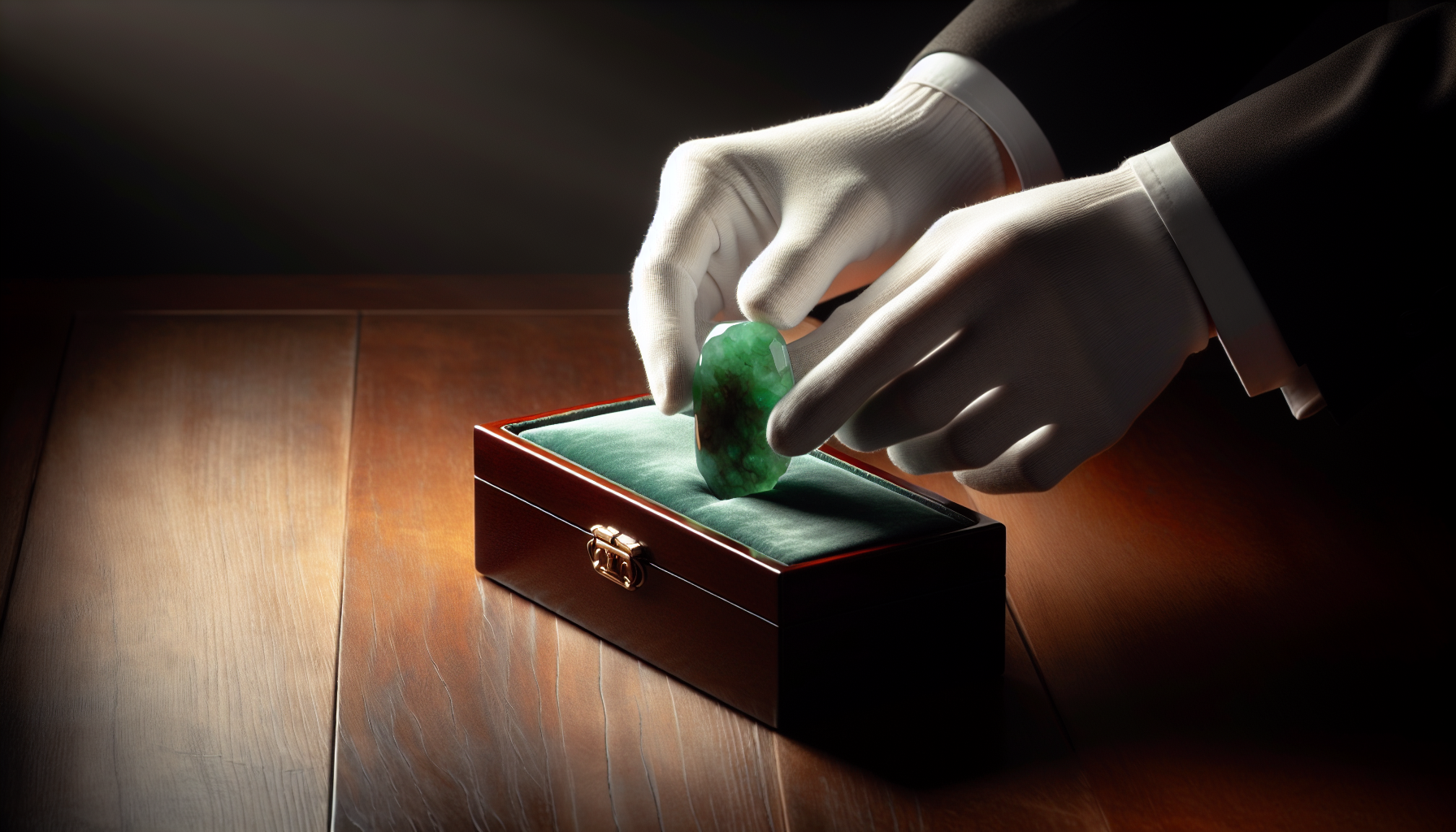
Caring for jade requires a delicate balance between interaction and preservation. Just as a rare painting needs the right conditions to maintain its vibrancy, jade too needs specific care to preserve its beauty and energy. When not being used, keeping jade in a soft bag can guard against scratching or tarnishing, similar to a protective cocoon safeguarding a butterfly.
Jade is quite robust, able to resist direct sunlight without suffering damage. However, it can be scratched by abrasive materials like steel knives or harsh brushes. So, storing jade separately from other jewelry and avoiding the use of strong chemicals or abrasive cleaners can ensure its longevity. As for temperature conditions, jade plants thrive best in room temperature. Therefore, avoiding extreme temperatures or sudden changes can help maintain the stone’s integrity and energy.
Summary
Navigating the world of jade and its interaction with water, we’ve discovered that this precious gemstone is more than just a pretty accessory. Its ability to safely interact with water, the various methods of cleansing and recharging it, the ability to identify genuine jade, and its myriad healing properties make it a valuable companion in our daily lives. Whether you choose to wear it, carry it, or pair it with other crystals, jade promises to infuse your life with luck, abundance, and a wealth of positive energy. Learning to care for it properly ensures that this gleaming gemstone continues to serve you for years to come, a testament to nature’s enduring beauty and power.
Frequently Asked Questions About Jade In Water
Does jade get damaged by water?
Jade can generally handle contact with water, however it should not be submerged for long periods of time. Additionally, the water should be free from chemicals and it is advised that jade jewelry should be removed prior to swimming or showering.
Can jade go in the pool?
It is advised to remove your jade before swimming in a pool, the ocean, showering or soaking in a hot tub. Avoid cleaning your jadeite with any acids or alcohol and make sure the water is chlorine and chemical-free.
How can I cleanse my jade stone?
To cleanse your jade stone, mix a solution of mild soap and warm water. Recharge it with moonlight, brown rice, or sage for an energy boost.
How can I identify genuine jade?
To identify genuine jade, measure its hardness on the Mohs scale (between 6.5 to 7) and use a specific gravity test to assess its density.
What are the healing properties of jade?
Jade has been used for centuries to bring luck, abundance, and activate the heart chakra, while also promoting healing and rejuvenation.